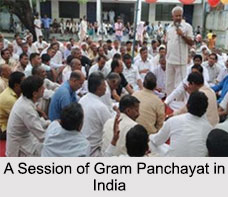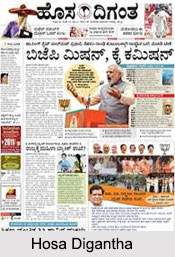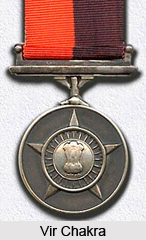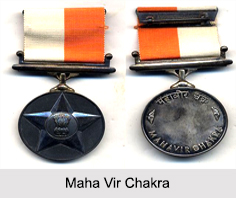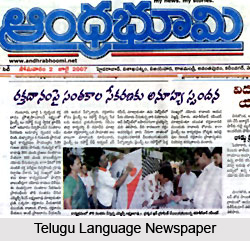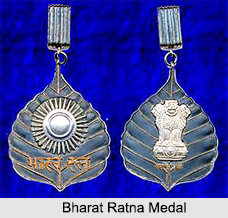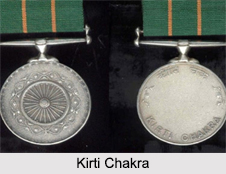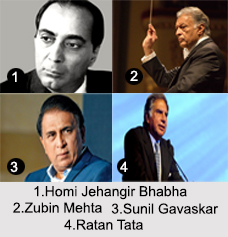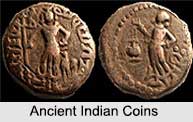 Coins of India have been formed yearly which make up an important characteristic of the Indian currency system. Coins of the Indian rupee were first minted in 1950. The first dedicatory coin was dated 1964 and had a bust of Jawaharlal Nehru and was issued in one and half rupee.
Coins of India have been formed yearly which make up an important characteristic of the Indian currency system. Coins of the Indian rupee were first minted in 1950. The first dedicatory coin was dated 1964 and had a bust of Jawaharlal Nehru and was issued in one and half rupee.
History of Indian Coins
In Indus Valley Civilisation, barter system or the exchange of agricultural products for necessary items was prevalent. With passing of time, the cows replaced the agricultural goods as the mediums of exchange. Then metal was chosen but the difficulty with the metal was to maintain uniformity in their weight and size. Transactions involving metal were tedious as scales were required for every transaction. To overcome this difficulty, metallic pieces of definite weight and value was introduced. In spite of the apparent uniformity in weight and size of ingots, the metal sheets or pieces were made from them. Hence, the need for scales and touchstones arose to determine the quality and quantity of the metals.
The practice of stamping the metallic pieces with a mark or device of a responsible authority as a sign of guarantee was introduced in many countries. This was the time when the formation of coin was started. According to historical evidences, all the earliest coins were made of silver and these, perhaps, belonged to sixth century B.C. The actual coins of this period were of round, oval and elliptical shape and also bore symbols. Some of the coins were made of silver and copper and bore animal and plant symbols on them. Different states had their different style and pattern for coins. By this time a large number of tribes, dynasties and kingdoms began issuing their coins. The symbols and inscriptions on the coins were dependent on the kings who introduced several symbols and inscription during their ruling period. The thickness and quality of metal were improved and coins were issued in several denominations. The coins of India tell the story of the Mauryan Empire. A theory of bimetallism for coinage was introduced by Kautilya and this included the use of two metals, copper and silver. The coins of Post Mauryan era also maintained a similar pattern of coinage.
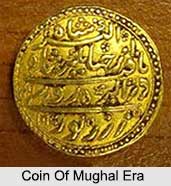
The coins of the Kushanas support effigies of a number of Greek, Iranian, Buddhist and Brahmanical Gods and Goddesses. The representation of Buddha in human form is noticed for the first time on the coins of Kanishka. On the coins of the Guptas, one can witness the figures of Hindu Goddesses like Durga, Ganga and Lakshmi. In this context of the historical evolvement of Indian coins, quite evidently comes up the study of ancient coins of India, with the ushering in of the Hindu dynasties and its rulers. With the arrival of Muslim invaders and their dynasties from places like Arab, Persia and Turkey, the reigning period of Hindu rulers came to recede. The ultimate ushering in of the Delhi Sultanate had become successful to entirely alter the outline of Indian coins and mintage. Coins in medieval India were given special touch, marked as it was by a considerable elaboration of the `money economy`. The Delhi Sultanate namely Ala ud din Khilji of Khilji Dynasty and Qutb ud din Aibak of Slave Dynasty, had issued an immense variety of gold and silver coins in umpteen numbers differentiating in style and pattern. The weighing of the coins was also an important factor in the numismatic history of India.
Among the important changes of Indian coins, the Persian influence was discernable with the image of the king and sometimes `Kalima` on the coins. Muhammad Bin Tughlaq from Tughlaq Dynasty had minted coins in the name of his dead father. His successor Feroz Shah Tughlaq had brought out coins in the name of his dead son. The coins issued during this time contained Hijri year and the mint name. Since the ruling period of Emperor Zahiruddin Mohammed Babur and perhaps mostly flourishing under the reign of Jalaluddin Mohammed Akbar, the coins issued during this time also have a cultural impact on the society and they also contained valuable historical facts.
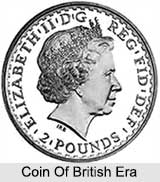 The coins of South India underwent a change in the coins and coinage system as rulers issued their coins in silver, billon, copper and probably in gold. Some of the rulers also included inscriptions, sometimes one side of the coin was decked with the Sultan`s name in a circle and the reverse side of the coin contained the date in Arabic numerals. The metrology of the coins perhaps gained the influence by the metrology of the early South Indian coinage. The copper coins were issued of a number of denominations. The Nizam Shahi dynasty, the later rulers of Imad Shahi dynasty, also issued some coins in copper which bore the name of the issuer and the mint name on one side and the date on the other side of the coin. The rulers of Adil Shahi dynasty issued coins in copper of three denominations. Silver coins were also issued of foreign pattern, sometimes with the name of the king, date, legends and Persian couplets.
The coins of South India underwent a change in the coins and coinage system as rulers issued their coins in silver, billon, copper and probably in gold. Some of the rulers also included inscriptions, sometimes one side of the coin was decked with the Sultan`s name in a circle and the reverse side of the coin contained the date in Arabic numerals. The metrology of the coins perhaps gained the influence by the metrology of the early South Indian coinage. The copper coins were issued of a number of denominations. The Nizam Shahi dynasty, the later rulers of Imad Shahi dynasty, also issued some coins in copper which bore the name of the issuer and the mint name on one side and the date on the other side of the coin. The rulers of Adil Shahi dynasty issued coins in copper of three denominations. Silver coins were also issued of foreign pattern, sometimes with the name of the king, date, legends and Persian couplets.
During the British period, coins were made out of gold, silver, copper and tin. Beautiful and dainty gold coins were begun to be minted in Murshidabad, Kolkata by the East India Company. Coins of modern India for the very first time were being moulded in factories through machine and also struck meticulously, popularly referred to as "Mohur" or "Muhar". The rise of British as the most overriding power after over a hundred years of violent agitation, lead them to enact the Coinage Act of 1835 and since then newly designed coins carrying the image of William IV on the obverse and the value on the reverse in English and Urdu were issued. Initially the British Raj coins were minted with a mature portrait of Victoria, as Queen on the obverse but after her coronation on the throne, coins were issued with her name as Empress, Her Highness. Edward VII had succeeded Queen Victoria and the modern coins in India issued during this moment, thus, bore his model. The Indian Coinage Act, 1906 was passed which governed the establishment of Mints as well as the coins and established the standards that would be maintained while issuing coins.
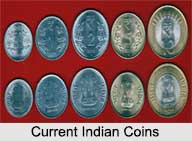 Post Independence Indian Coins
Post Independence Indian Coins
After the independence, new coins and coinage were introduced by Independent India. The coins issued during this time contained Ashoka`s Lion Capital motif. Some of the coins were made of stainless steel and small denomination coins were made. These small denominational coins which were manufactured of bronze, nickel-brass, cupro-nickel and Aluminium-Bronze, were gradually minted in Aluminium. This modification was started out with the introduction of the new hexagonal 3 paisa coin. A twenty paisa coin was also initiated in 1968. In 2002, the 11-sided 2 Rupee coins were manufactured that feature a map of India. The 2001, 1 Rupee is struck in stainless steel. The 1999, 50 paisa featured the Parliament building and a map of India. A rhinoceros is featured on the 1994, 25 paisa.
In 2004, Reserve Bank of India issued a series in denominations of 1 rupee, followed by 2 rupee and 10 rupee in 2005. The 10 rupee coins were the first bimetallic coins issued in India. In 2007, Reserve Bank of India issued a new series of Coins, the "Hasta Mudra" Series, in coins of 50 paisa, 1 rupee and 2 rupee denominations. The 5 rupees piece that features waves in its design was also issued in 2007, along with a new 10 rupee coin. However, the design of the 10 rupees piece changed in 2008 and the 5 rupees coin design was again reverted to the earlier design. In 2011, Reserve Bank of India issued a series in denominations of 50 paisa, 1rupee, 2 rupees, 5 rupees, and 10 rupees. The 50 paisa, 1 rupee, 2 rupees and 5 rupees designs are alike except the absence of the rupee symbol in 50 paisa coin. The 10 rupees coin continued to be issued in bimetallic issues as formerly.








